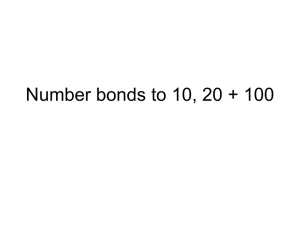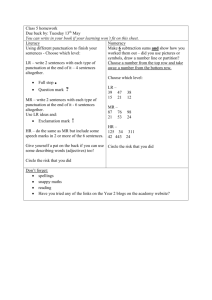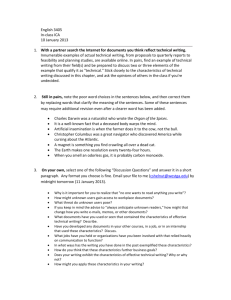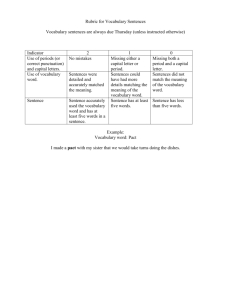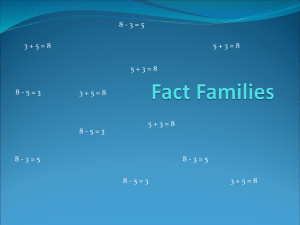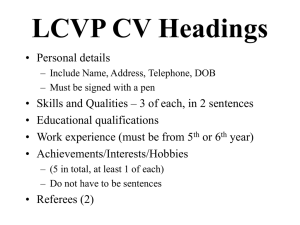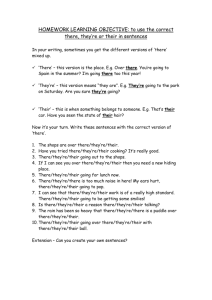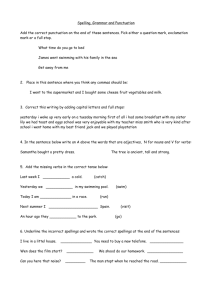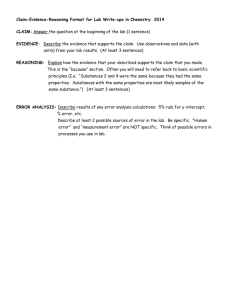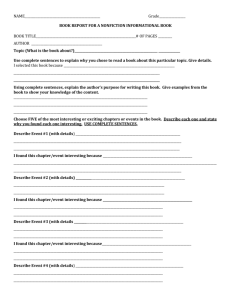Teaching sentence structure and punctuation in year 3
advertisement
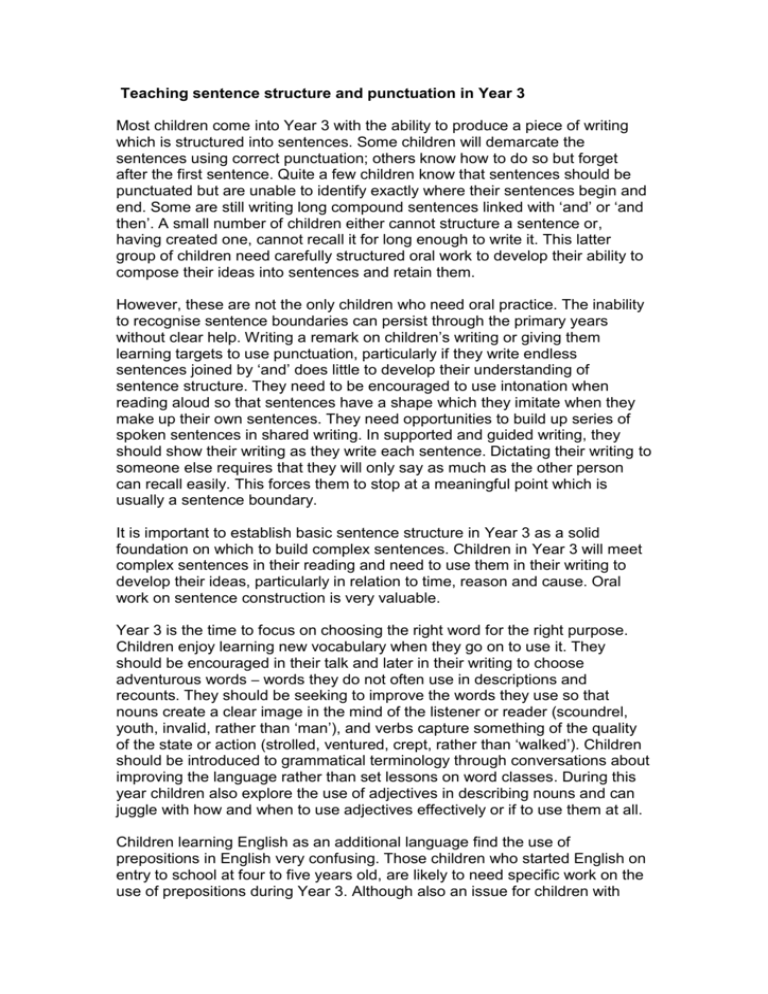
Teaching sentence structure and punctuation in Year 3 Most children come into Year 3 with the ability to produce a piece of writing which is structured into sentences. Some children will demarcate the sentences using correct punctuation; others know how to do so but forget after the first sentence. Quite a few children know that sentences should be punctuated but are unable to identify exactly where their sentences begin and end. Some are still writing long compound sentences linked with ‘and’ or ‘and then’. A small number of children either cannot structure a sentence or, having created one, cannot recall it for long enough to write it. This latter group of children need carefully structured oral work to develop their ability to compose their ideas into sentences and retain them. However, these are not the only children who need oral practice. The inability to recognise sentence boundaries can persist through the primary years without clear help. Writing a remark on children’s writing or giving them learning targets to use punctuation, particularly if they write endless sentences joined by ‘and’ does little to develop their understanding of sentence structure. They need to be encouraged to use intonation when reading aloud so that sentences have a shape which they imitate when they make up their own sentences. They need opportunities to build up series of spoken sentences in shared writing. In supported and guided writing, they should show their writing as they write each sentence. Dictating their writing to someone else requires that they will only say as much as the other person can recall easily. This forces them to stop at a meaningful point which is usually a sentence boundary. It is important to establish basic sentence structure in Year 3 as a solid foundation on which to build complex sentences. Children in Year 3 will meet complex sentences in their reading and need to use them in their writing to develop their ideas, particularly in relation to time, reason and cause. Oral work on sentence construction is very valuable. Year 3 is the time to focus on choosing the right word for the right purpose. Children enjoy learning new vocabulary when they go on to use it. They should be encouraged in their talk and later in their writing to choose adventurous words – words they do not often use in descriptions and recounts. They should be seeking to improve the words they use so that nouns create a clear image in the mind of the listener or reader (scoundrel, youth, invalid, rather than ‘man’), and verbs capture something of the quality of the state or action (strolled, ventured, crept, rather than ‘walked’). Children should be introduced to grammatical terminology through conversations about improving the language rather than set lessons on word classes. During this year children also explore the use of adjectives in describing nouns and can juggle with how and when to use adjectives effectively or if to use them at all. Children learning English as an additional language find the use of prepositions in English very confusing. Those children who started English on entry to school at four to five years old, are likely to need specific work on the use of prepositions during Year 3. Although also an issue for children with English as an additional language, consistency in the use of tense and person is not confined to these children. Most dialects deviate from Standard English in the use of noun/pronoun-verb agreement and children need to understand that written English uses the standard forms. During Year 3 children focus on dialogue, how it is written in plays and how it is punctuated in prose. Commas were introduced in lists in Year 2 and this is extended in Year 3 to demarking lists of phrases. Before their use is extended in Year 4, there is a lot to do in Year 3 in reading, to acquaint children with the use of the comma to mark grammatical boundaries. Grammar for Writing *(DfEE 0107/2000) has activities to cover all these areas. However, the opportunity to use shared reading and writing to explore sentence construction and its punctuation and effective use of vocabulary should also be taken. Source material/further information: 1 Grammar for Writing DfEE 0107/2000 1 Any references to the NLS ‘searchlights model in this document need to be interpreted in the light of the recommendations of the Rose review.
